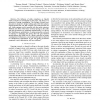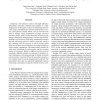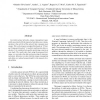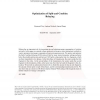INFOCOM
2009
IEEE
14 years 6 months ago
2009
IEEE
—Energy use of computer communication systems has quickly become a vital design consideration. One effective method for reducing energy consumption is dynamic speed scaling, whic...
ICRA
2009
IEEE
14 years 6 months ago
2009
IEEE
— The influence of ankle compliance on bipedal robot locomotion is investigated in this paper. The focus is on reduction of energy consumption. The concept of hybrid zero dynami...
ICDCSW
2009
IEEE
14 years 6 months ago
2009
IEEE
Designing cyber-physical systems with high efficiency, adaptability, autonomy, reliability and usability is a challenging task. In this paper, we focus on minimizing networkwide ...
QSHINE
2009
IEEE
2009
IEEE
Joint Optimization of System Lifetime and Network Performance for Real-Time Wireless Sensor Networks
14 years 6 months ago
Maximizing the aggregate network utility and minimizing the network energy consumption are important but conflict goals in wireless sensor networks. Challenges arise due to the app...
ISCC
2009
IEEE
14 years 6 months ago
2009
IEEE
Recent studies indicate that the Internet-related energy consumption represents a significant, and increasing, part of the overall energy consumption of our society. The largest c...
ISCC
2009
IEEE
14 years 6 months ago
2009
IEEE
In wireless sensor networks, energy consumption is generally associated with the amount of sent data once communication is the activity of the network that consumes more energy. T...
ICC
2009
IEEE
14 years 6 months ago
2009
IEEE
Relays play an important role for increasing rate and reducing energy consumption of wireless networks. In this paper we consider a three-node network (source, relay, destination)...
ICC
2009
IEEE
14 years 6 months ago
2009
IEEE
—This paper presents a cooperative single-input multiple-output (SIMO) transmission scheme for wireless sensor networks (WSNs), where the number of antennas and the constellation...
CODES
2009
IEEE
14 years 6 months ago
2009
IEEE
Time redundancy (rollback-recovery) and hardware redundancy are commonly used in real-time systems to achieve fault tolerance. From an energy consumption point of view, time redun...
BIRTHDAY
2009
Springer
14 years 6 months ago
2009
Springer
Energy has become a scarce and expensive resource. There is a growing awareness in society that energy saving is a critical issue. This paper surveys algorithmic solutions to reduc...




